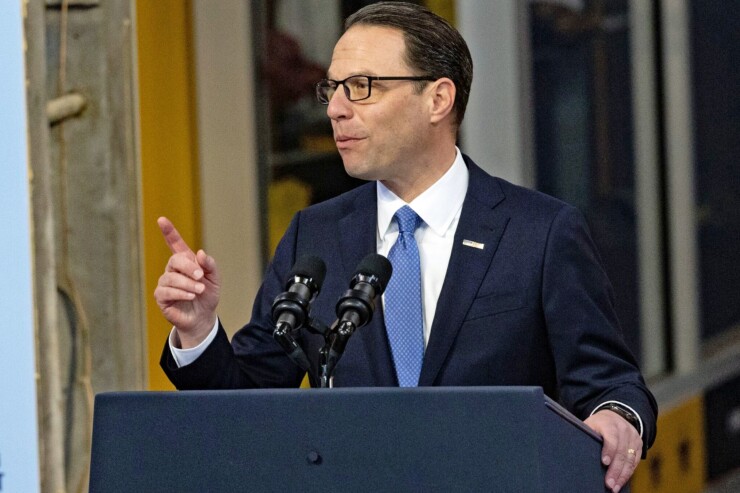Pennsylvania governor pitches economic development plan to spur growth
3 min read

Pennsylvania Gov. Josh Shapiro announced a new
The department was “eviscerated” by then-governor Tom Corbett around 2010, Herzenberg said, which put a stop to investments in many of the areas the new economic development plan will cover.
The workforce development section of the plan includes $2 million for “Career Connect,” an internship program, and calls for apprenticeships, higher education reform and enticing young people not to move — the report notes that only 41% of people who graduate from Pennsylvania’s universities stay in the commonwealth.
Herzenberg praised this section of the plan. Pennsylvania’s public universities are very expensive, Herzenberg said, and many areas of the commonwealth have few alternatives.
“Forty percent of our population doesn’t have a local community college,” Herzenberg said. “There’s a giant community college desert in the rural [areas] of Pennsylvania.”
Point four of the plan invests in five key industries: agriculture, energy, life sciences, manufacturing and robotics and technology. These sectors have historically been strong in Pennsylvania, Buswick said.
“The “eds and meds” are something that Pennsylvania has been known for for years,” Buswick said; Pittsburgh and Philadelphia are nationally known for robotics and life sciences, respectively.
The plan calls for financial support to entrepreneurs and will create “innovation councils” connecting industries and researchers in Pennsylvania’s universities. It also directs $10 million toward innovation in the agriculture industry.
Energy is a divisive issue in Pennsylvania, Herzenberg said. The commonwealth has a lot of coal and natural gas, and many jobs and local economies are dependent upon those energy sources.
The plan celebrates the commonwealth’s status as the second largest energy provider in the United States and mentions natural gas and pipelines along with nuclear power and hydro turbine manufacturing. But it doesn’t indicate which parts of the energy industry will receive more investment and development.
Herzenberg argued that the governor could, for instance, promote a plan to put
“I think there’s more work to be done in this plan to infuse more of a forward-looking climate change lens into the energy and manufacturing components,” Herzenberg said.
The plan’s final point, regional development, seeks to ensure the commonwealth has enough housing and infrastructure to support a burgeoning business sector.
The plan will spend $25 million for the Main Street Matters program to fund municipalities’ downtown and main street projects. It also includes $3.5 million for the Pennsylvania Regional Hubs Challenge, inspired by the federal government’s Build Back Better Regional Challenge.
The commonwealth will seek more federal funding for infrastructure and workforce development and will “partner with residential developers to construct and rehabilitate new and existing housing stock across the commonwealth.”
More details of the plan will become clear when Shapiro releases his budget request, but the true benefits of economic development take years to materialize, Buswick said.
When a government prepares a site, “you may have that site empty for four years,” Buswick said. “And so, for four years, you’re looking at, ‘Wow, we spent all that money. Should we have spent it?’ The fifth year, you get something great, and ‘Oh, of course we should’ve spent it.'”







